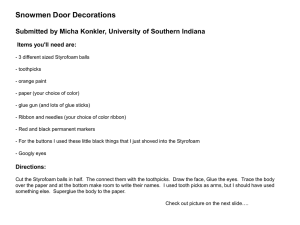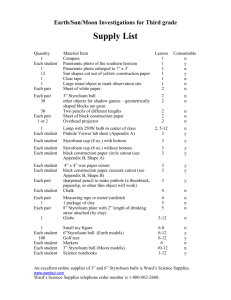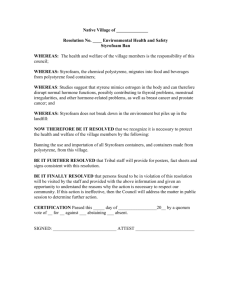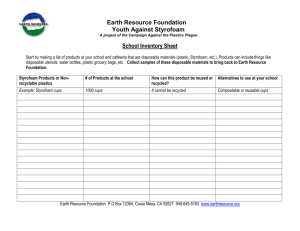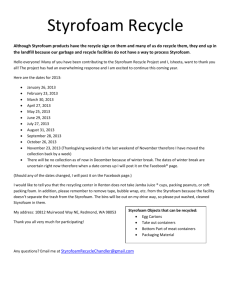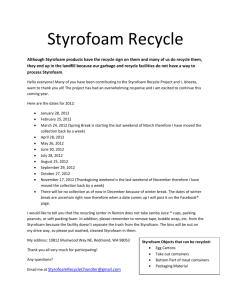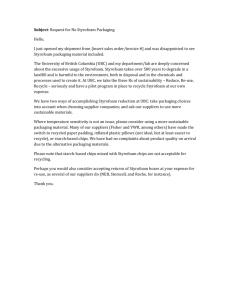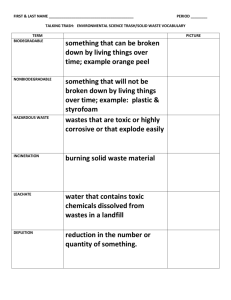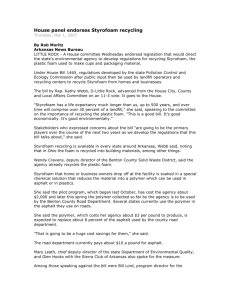Styrofoam-Facts
advertisement
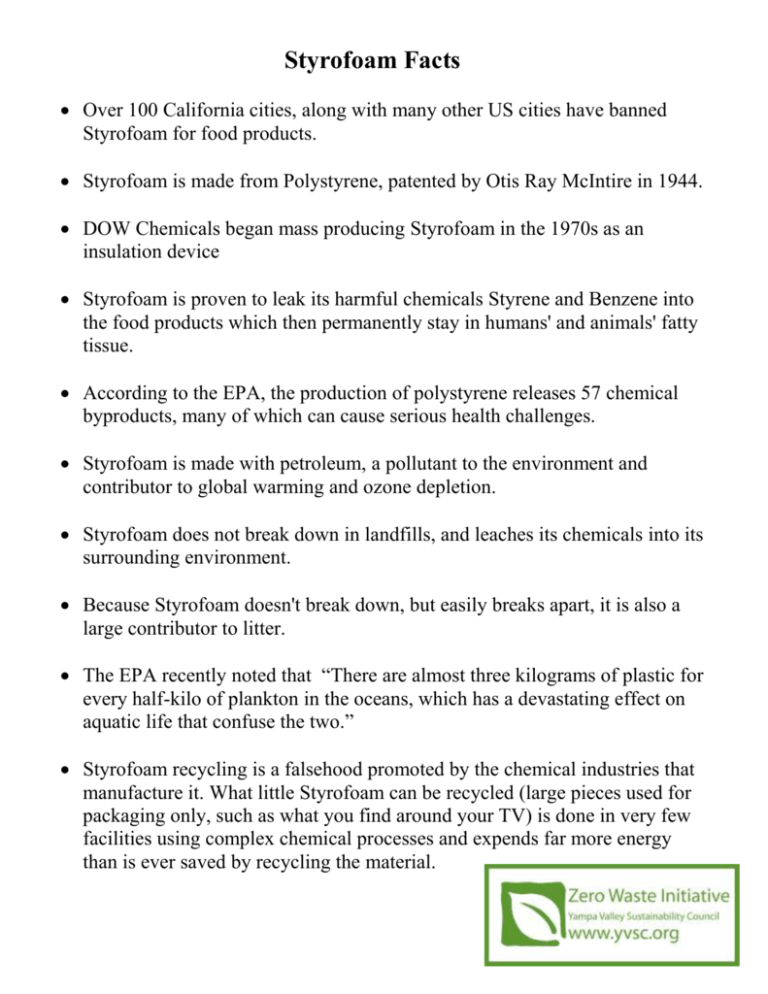
Styrofoam Facts Over 100 California cities, along with many other US cities have banned Styrofoam for food products. Styrofoam is made from Polystyrene, patented by Otis Ray McIntire in 1944. DOW Chemicals began mass producing Styrofoam in the 1970s as an insulation device Styrofoam is proven to leak its harmful chemicals Styrene and Benzene into the food products which then permanently stay in humans' and animals' fatty tissue. According to the EPA, the production of polystyrene releases 57 chemical byproducts, many of which can cause serious health challenges. Styrofoam is made with petroleum, a pollutant to the environment and contributor to global warming and ozone depletion. Styrofoam does not break down in landfills, and leaches its chemicals into its surrounding environment. Because Styrofoam doesn't break down, but easily breaks apart, it is also a large contributor to litter. The EPA recently noted that “There are almost three kilograms of plastic for every half-kilo of plankton in the oceans, which has a devastating effect on aquatic life that confuse the two.” Styrofoam recycling is a falsehood promoted by the chemical industries that manufacture it. What little Styrofoam can be recycled (large pieces used for packaging only, such as what you find around your TV) is done in very few facilities using complex chemical processes and expends far more energy than is ever saved by recycling the material.

